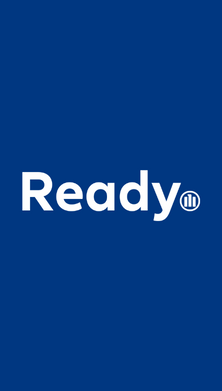Tougher regulation and harsher penalties, the rise of large multinational corporations and increasingly complex and consolidated supply chains, the socio-economic landscape, increasing threat of litigation, technological advances in product testing, as well as heightened consumer awareness – and growing use of social media – are just some of the contributing factors which means product recall exposures have increased significantly over the past decade. We are now seeing and experiencing recalls on a scale not seen before, bringing record levels of activity and costs.
For example, more cars were recalled than ever before in the US during 2016 – the third year in a row this phenomenon has occurred. According to the National Highway Traffic Safety Administration, 53.2 million vehicles had to be returned – over three times as many as during 2012 (16.5 million). This trend is mirrored across Europe.
The total number of automotive recall events jumped 76% year-on-year in 2016, according to Stericycle Expert Solutions1 - the highest total recorded since the European Union’s rapid alert system (RAPEX), which warns about non-food products that pose a safety risk, began. And as recent incidents in the sector involving the likes of flawed airbags, accelerator pedals and ignition switches demonstrate – billion dollar loss bills are no longer a rare occurence.

Rise in reported incidents
The food and beverage sector is another that is particularly exposed. As well as having a catastrophic financial impact, a serious event can also endanger public health. One of the largest recalls in US food history, involving contaminated peanuts, began after more than 700 people in over 40 states fell ill. It ended with the company responsible bankrupt and its CEO in prison.
Reported incidences are also on the rise in this sector. Food recalls in the US doubled over a decade, according to reinsurer Swiss Re2 while there was a 20%+ surge in US and Canadian recalls year-on-year in 20163, driven by pathogens and undeclared allergens. At the same time, introduction of new legislation on the labeling of food allergens across the European Union led to a 60%+ increase in recalls in 2016, driven by mislabeled allergens.
Product-related risk largest cause of liability loss
By the numbers - Product recall claims analysis
For this report AGCS analyzed 367 dedicated product recall insurance claims from 28 countries across 12 industry sectors with a total value of €312.4m ($367m)5. Overall, defective product or work is the major cause of product recall claims across all sectors, accounting for around 80% by number. This was followed by product contamination (12%), which is heavily driven by the food and beverage sector. The analysis also shows that the 10 largest product recall claims account for over 50% of the value of all claims analyzed, demonstrating the significant influence of large recall loss events.
Nine of these originated in the automotive/industrial supplier sector. This sector is also the most expensive from a claims perspective, accounting for 71% of the value of all losses analyzed, with the average costs associated with a signicant recall incident totaling almost €12.5m ($14.5m). However, the total loss bill from the largest recall events can rise into the hundreds of millions, or even billions, of dollars, when other factors are taken into consideration, such as loss of sales and reputation, penalties and fines and litigation, for example.


Product recall - Impacted industries by value of insurance claims

Product recall - Impacted industries by number of insurance claims

Total number of claims analyzed: 367
Total value of claims: €312.4m
Average value of all claims analyzed: €851,000
Average value of claims analyzed, excluding small value claims: €1.4m
Countries in which claims arose: 28
Average Euros paid per day: €156,000
Claims scope: AGCS analyzed 367 dedicated product recall claims with a total value of €312,421,913, recorded for the accident years 2012 to 2016 and up to June 30, 2017. All claims figures are 100% (not only the AGCS share but including coinsurers’ shares, as product recall risks can be shared between different insurers). Small value claims <€20. While the losses analyzed are not representative of the industry as a whole, and reflect AGCS’ risk appetite, they give a strong indication of the product recall risk landscape today. Claims analysis does not include pharmaceutical industry drug recalls
Download the report
SOURCES
1. 415 automotive recall events in 2016, RAPEX, Stericycle Expert Solutions
2. 565 US Food and Drug Administration (FDA) recall events in 2014 compared with 240 in 2004, Food Safety In A Globalized World, Swiss Re
3. 764 food recall events in 2016 compared with 626 in 2015 based on FDA, US Department of Agriculture’s Food Safety and InspectionService, Canadian Food Inspection Agency statistics, Food Safety Magazine
4. 100,073 liability insurance claims analyzed between January 1, 2011 and September 13, 2016, Global Claims Review: Liability In Focus, Allianz Global Corporate & Specialty
5. 367 standalone product recall claims featuring AGCS and other insurers analyzed between January 1, 2012 and June 30, 2017















